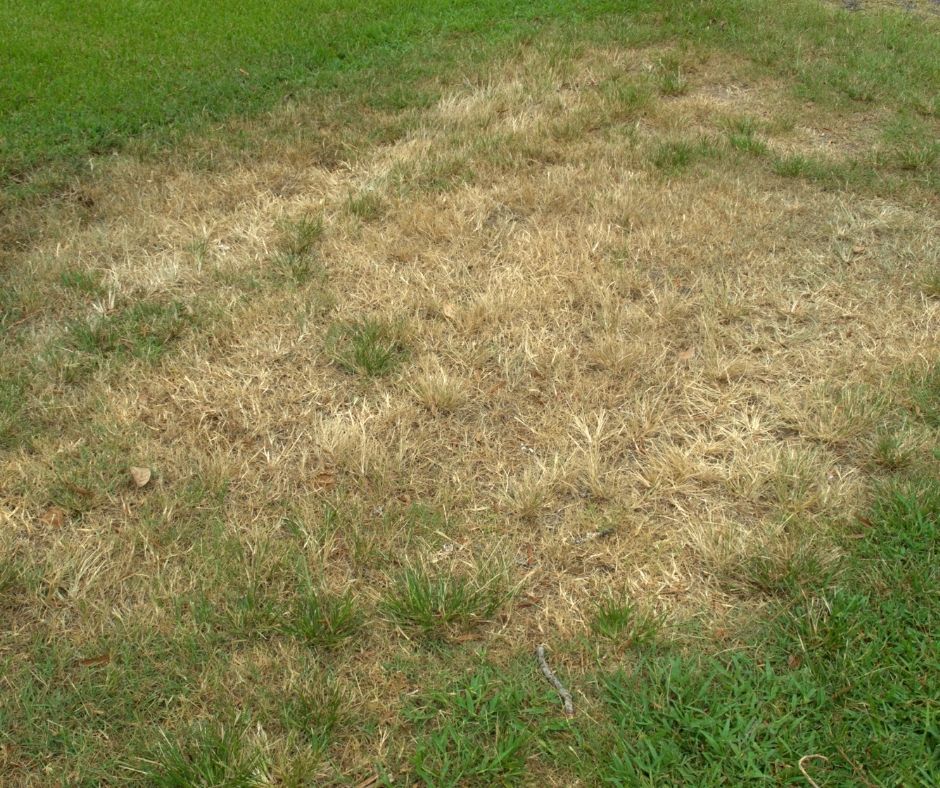Brown patches are hideous to see on a lawn. Many causes can be attributed to brown patches.
Brown patches, as the name suggests, are not the most beautiful thing in the world. It is a dead area of your lawn. It affects different grass varieties and can appear during the cold and hot seasons.
Typically the blades of your lawn’s plants are affected but not the root system. So, there is hope! Although, you should not wait to get it under control.
What Are Brown Patches?
Brown patches are irregular circular shapes. No one likes to see them, but if they are there, you should not ignore them.
Multiple things can cause them:
- Disease caused by the fungus Rhizoctonia
- Important thatch layer
- Dog urine
- Improper mowing height
- Inappropriate over-fertilization
- Too much water
- Excessive heat and humidity
So, if brown patches appear, it is either a disease, environmental aggressions, dogs, or you’ve done something wrong. If it is the latter, blame it on the dog!
You can spot the early signs. For instance, if you see yellow spots appear, there are chances that they will turn brown. Typically, in the affected area of your lawn, the grass is thinning and the inside of the ring gets killed completely.
How to Avoid These Brown Patches?
- Use a fungicide to disease with the fungus Rhizoctonia. There are hundreds of fungicides out there. Therefore, contact a lawn care company to have it taken care of.
- Dethatch your lawn periodically. Thatch buildup appears when the microbial life in the soil cannot break down the organic matter as fast as it accumulates. Thatch creates a barrier to nutrients, air, and moisture. If you do not remove the thatch layer, your lawn will die over time.
- Be careful with your fertilizer and the fertilization process. If nitrogen is adequate, too much nitrogen can be detrimental to your lawn and create brown patches. The simple measure to put in place is to avoid fertilizing when it is too hot and humid. It is also very important to gauge the amount of fertilizer properly. Do you remember the NPK rules and how to calculate how much you need per square foot? If not, here is a useful link.
- Aerate your lawn. Your lawn needs air, just like you do. Periodic aeration in the early spring or fall will help your lawn thrive and be more resilient to brown patches’ formation. A core or liquid aeration or a combination of the two will fortify the root system.
- Do not mow your lawn too short. It is detrimental to your grass plants. Make sure the blades of your mowing machine are clean and not dull. Also, do not mow below 4 inches. Remember that time you shaved your head and got a sunburn on your scalp? The same principle applies to your lawn.
- Your soil quality is the most important. Try to test your soil periodically. There are great soil testing kits available, and you can send the samples to a third-party lab for analysis. Check the results and spot the deficiencies because you may need to amend the soil. Your soil needs good bacteria to help with the microbial activity.
- Get that damn dog to pee somewhere else. It is all about awareness and habits. Dogs are great companions, but they are creatures of habits when it comes to marking their territory. Try to take your dog off your lawn, and people as well. Heavy human activity on your lawn can be detrimental too.
- Make sure you practice great winter lawn care during the winter season. Yes, winter lawn care is a thing, and you should know the do’s, especially the don’ts.
- Try to understand the grass varieties you have in your yard. Some species have different cycles and turn brown when they are dormant. So if your lawn is composed of different grass types, some yellowish or brown spots may appear before others.
Here Are Your Takeaways
What is very important to fight brown patches is to know what causes them.
If you cannot identify the root cause or are unsure, applying these rules will help you maintain a healthy lawn. Remember that a lawn is a living thing that requires a balanced approach and to contact us for any questions.

